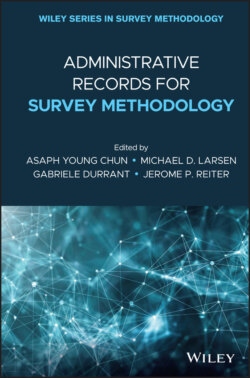Читать книгу Administrative Records for Survey Methodology - Группа авторов - Страница 48
2.4 Physical and Legal Protections
ОглавлениеThe provision of very detailed micro-tabulations or public-use microdata may not be sufficient to inform certain types of research questions. In particular, for business data the thresholds that trigger SDL suppression methods are met far more often than for individuals or households. In those cases, the research community needs controlled access to confidential microdata. Three key reasons why access to microdata may be beneficial are:
1 (i) microdata permit policy makers to pose and analyze complex questions. In economics, for example, analysis of aggregate statistics does not give a sufficiently accurate view of the functioning of the economy to allow analysis of the components of productivity growth;
2 (ii) access to microdata permits analysts to calculate marginal rather than just average effects. For example, microdata enable analysts to do multivariate regressions whereby the marginal impact of specific variables can be isolated;
3 (iii) broadly speaking, widely available access to microdata enables replication of important research(United Nations 2007, p. 4)
As we’ve outlined above, many of the concerns about confidentiality have either removed or prevented creation of public-use microdata versions of linked files, exacerbating the necessity of providing alternate access to the confidential microdata.
NSOs and survey organizations usually provide access to confidential linked data within restricted-access data centers. In the United States, this means either using 1 of 30 secure sites managed by the Census Bureau as part of the Federal Statistical Research Data Center System (FSRDC),12 or going to the headquarters of the statistical agency. Similarly, in other countries, access is usually restricted to headquarters of NSOs. Secure enclaves managed by NSOs used to be rare. In the 1990s and early 2000s, an expansion of existing networks and the creation of new, alternate methods of accessing data housed in secure enclaves occurred in several countries. Access methods may be through physical travel, remote submission, or remote processing. However, all methods rely on two fundamental elements. First, the researchers accessing the data are mostly free to choose the modeling strategy of their choice, and is not restricted to the tables or queries that the data curator has used for published statistics. Second, the output from such models is then analyzed to avoid unauthorized disclosure, and subsequently released to the researcher for publication.
Several methods are currently used by NSOs and other data collecting agencies to provide access to confidential data. Sections 2.4.1–2.4.5 will describe each of them in turn.13
